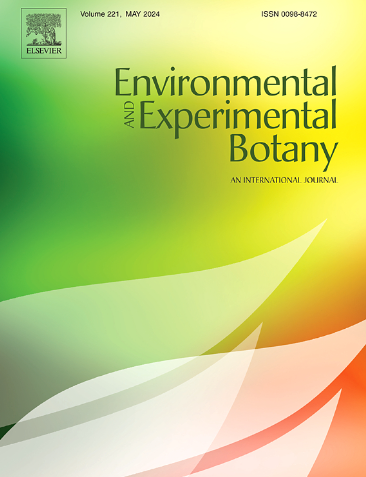在潮汐梯度上剖析两种不同红树林叶片功能性状与重金属积累之间可能的相关性
IF 4.7
2区 生物学
Q2 ENVIRONMENTAL SCIENCES
引用次数: 0
摘要
红树林叶片是植物生物量的重要组成部分,对污染沉积物中重金属的积累具有重要的调节作用。然而,目前尚不清楚红树林叶片重金属如何在不同潮汐水平下与叶片特征协调。本文以外来无瓣海桑(Sonneratia aptala)和本土海桑(Bruguiera sexangula)为研究对象,对红树林叶片功能性状和重金属(As、Pb、Cd、Cr和Cu)在不同潮位上的动态变化机制进行了定性研究。结果表明:随着潮位的增加,六棱草单株叶重和单株叶面积增加,无瓣草单株叶重和单株叶面积减少;黄竹对重金属的积累能力显著高于无瓣草对栅栏叶肉的富集能力,黄竹对海绵叶肉的吸收能力明显高于无瓣草对栅栏叶肉的吸收能力。这两个物种的叶片重金属浓度在潮汐中期达到峰值,这一现象与叶片结构调整、植物激素水平(ZR、JA-Me、IAA和ABA)的增加以及解毒机制的增强有关,包括还原型谷胱甘肽、非蛋白硫醇、谷胱甘肽- s转移酶、类黄酮、单宁和花青素,这些解毒机制都是由酸性pH和根上铁斑块沉积促进的。偏最小二乘路径模型进一步表明,植物激素通过改变叶片解剖特征和促进解毒来间接影响金属积累。这些结果强调了植物激素在决定两种植物重金属变化中的重要调节作用,这对利用和选择红树林植物进行植物修复具有重要意义。本文章由计算机程序翻译,如有差异,请以英文原文为准。
Dissecting possible correlations between leaf functional traits and heavy metal accumulation in two contrasting mangrove species across tidal gradients
The leaves of mangroves are a key component of the plant biomass, and they have a prominent function in heavy metal accumulation from contaminated sediments, which modulates their functional traits. However, it remains unclear how mangrove leaf heavy metals coordinate with leaf traits at different tidal levels. Thus, two species, exotic Sonneratia apetala and native Bruguiera sexangula, were selected to perform a qualitative study that shed light on the mechanisms underlying mangrove leaf functional traits and heavy metal dynamics (As, Pb, Cd, Cr, and Cu) across different tidal levels. The results showed that with increasing tidal levels individual leaf weight and individual leaf area increased in B. sexangula but decreased in S. apetala. The B. sexangula showed a markedly higher capacity for heavy metal accumulation, sequestering metals in the spongy mesophyll, contrasting with S. apetala, which concentrated metals in the palisade mesophyll. Both species peaked in leaf heavy metal concentrations at mid-tidal levels, a phenomenon linked to specialized leaf structural adjustments, increased phytohormone levels (ZR, JA-Me, IAA and ABA), and amplified detoxification mechanisms, including reduced glutathione, non-protein thiols, glutathione-S-transferase, flavonoids, tannins, and anthocyanins, which were facilitated by acidic pH and Fe plaque deposition on roots. Partial least squares path modeling further suggested that phytohormones influenced metal accumulation indirectly by altering leaf anatomical features and boosting detoxification. These results highlight the importance of phytohormones' regulatory role in determining the variation of heavy metals in both species, which has significant implications for applications in using and selecting mangrove plants for phytoremediation.
求助全文
通过发布文献求助,成功后即可免费获取论文全文。
去求助
来源期刊

Environmental and Experimental Botany
环境科学-环境科学
CiteScore
9.30
自引率
5.30%
发文量
342
审稿时长
26 days
期刊介绍:
Environmental and Experimental Botany (EEB) publishes research papers on the physical, chemical, biological, molecular mechanisms and processes involved in the responses of plants to their environment.
In addition to research papers, the journal includes review articles. Submission is in agreement with the Editors-in-Chief.
The Journal also publishes special issues which are built by invited guest editors and are related to the main themes of EEB.
The areas covered by the Journal include:
(1) Responses of plants to heavy metals and pollutants
(2) Plant/water interactions (salinity, drought, flooding)
(3) Responses of plants to radiations ranging from UV-B to infrared
(4) Plant/atmosphere relations (ozone, CO2 , temperature)
(5) Global change impacts on plant ecophysiology
(6) Biotic interactions involving environmental factors.
 求助内容:
求助内容: 应助结果提醒方式:
应助结果提醒方式:


